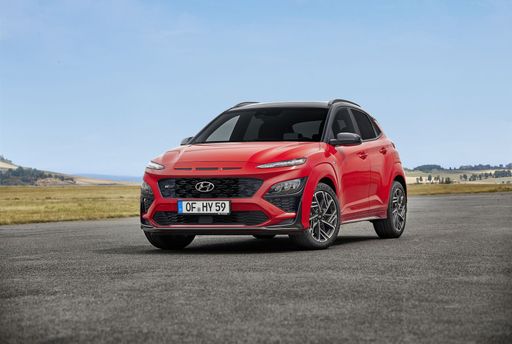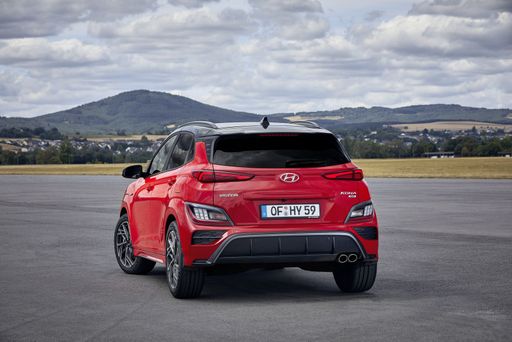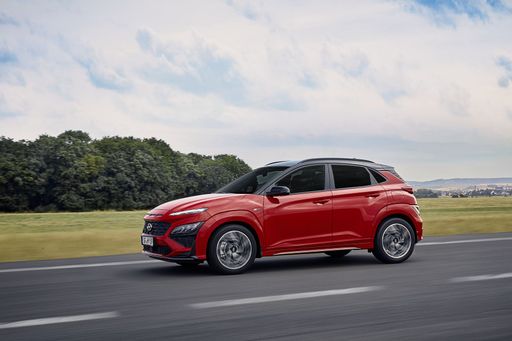Hyundai Kona vs ZEEKR X – Performance, range & efficiency compared
Two cars, one duel: Hyundai Kona meets ZEEKR X.
Which one wins in performance, efficiency and value for money? Find out now!
Costs and Efficiency:
Price and efficiency are often the first things buyers look at. Here it becomes clear which model has the long-term edge – whether at the pump, the plug, or in purchase price.
Hyundai Kona has a clearly advantage in terms of price – it starts at 23100 £, while the ZEEKR X costs 38600 £. That’s a price difference of around 15505 £.
In terms of energy consumption, the advantage goes to the Hyundai Kona: with 14.60 kWh per 100 km, it’s somewhat more efficient than the ZEEKR X with 16.50 kWh. That’s a difference of about 1.90 kWh.
As for range, the Hyundai Kona performs a bit better – achieving up to 514 km, about 69 km more than the ZEEKR X.
Engine and Performance:
Power, torque and acceleration say a lot about how a car feels on the road. This is where you see which model delivers more driving dynamics.
When it comes to engine power, the ZEEKR X has a clearly edge – offering 428 HP compared to 218 HP. That’s roughly 210 HP more horsepower.
In acceleration from 0 to 100 km/h, the ZEEKR X is decisively quicker – completing the sprint in 3.80 s, while the Hyundai Kona takes 7.80 s. That’s about 4 s faster.
In terms of top speed, the Hyundai Kona performs a bit better – reaching 210 km/h, while the ZEEKR X tops out at 180 km/h. The difference is around 30 km/h.
There’s also a difference in torque: ZEEKR X pulls decisively stronger with 543 Nm compared to 265 Nm. That’s about 278 Nm difference.
Space and Everyday Use:
Cabin size, boot volume and payload all play a role in everyday practicality. Here, comfort and flexibility make the difference.
Both vehicles offer seating for 5 people.
In curb weight, Hyundai Kona is evident lighter – 1370 kg compared to 1855 kg. The difference is around 485 kg.
In terms of boot space, the Hyundai Kona offers evident more room – 466 L compared to 362 L. That’s a difference of about 104 L.
When it comes to payload, ZEEKR X a bit takes the win – 555 kg compared to 490 kg. That’s a difference of about 65 kg.
Who comes out on top?
Overall, the ZEEKR X shows itself to be outperforms in nearly all aspects and secures the title of DriveDuel Champion.
It convinces with the more balanced overall package and proves to be the more versatile choice for everyday use.
ZEEKR X
Hyundai Kona
The Hyundai Kona blends a bold design with a versatile interior, making it a standout choice in the compact SUV market. Its crisp handling and responsive steering provide an engaging driving experience, whether in the city or on the open road. The vehicle also offers a range of features designed to enhance comfort and connectivity, ensuring a pleasurable journey for both driver and passengers.
details @ hyundai.news
@ hyundai.news
 @ hyundai.news
@ hyundai.news
 @ hyundai.news
@ hyundai.news
 @ hyundai.news
@ hyundai.news
ZEEKR X
The ZEEKR X is an intriguing addition to the burgeoning world of electric vehicles, offering a sleek design that seamlessly blends modern aesthetics with advanced technology. With its spacious interior and high-quality materials, this vehicle prioritises comfort and luxury for both driver and passengers alike. The ZEEKR X also impresses with its efficient performance and cutting-edge safety features, making it a compelling choice for those looking to embrace a sustainable lifestyle without compromising on style or practicality.
details

|
|
|
|
|
Costs and Consumption |
|
|---|---|
|
Price
23100 - 41600 £
|
Price
38600 - 42400 £
|
|
Consumption L/100km
4.6 - 7 L
|
Consumption L/100km
-
|
|
Consumption kWh/100km
14.6 - 16.8 kWh
|
Consumption kWh/100km
16.5 - 17.5 kWh
|
|
Electric Range
377 - 514 km
|
Electric Range
425 - 445 km
|
|
Battery Capacity
1.3 - 65.4 kWh
|
Battery Capacity
64 kWh
|
|
co2
0 - 163 g/km
|
co2
0 g/km
|
|
Fuel tank capacity
38 - 47 L
|
Fuel tank capacity
-
|
Dimensions and Body |
|
|---|---|
|
Body Type
SUV
|
Body Type
SUV
|
|
Seats
5
|
Seats
5
|
|
Doors
5
|
Doors
5
|
|
Curb weight
1370 - 1773 kg
|
Curb weight
1855 - 1960 kg
|
|
Trunk capacity
466 L
|
Trunk capacity
362 L
|
|
Length
4350 - 4385 mm
|
Length
4432 mm
|
|
Width
1825 mm
|
Width
1836 mm
|
|
Height
1580 - 1585 mm
|
Height
1566 mm
|
|
Max trunk capacity
1300 L
|
Max trunk capacity
-
|
|
Payload
420 - 490 kg
|
Payload
550 - 555 kg
|
Engine and Performance |
|
|---|---|
|
Engine Type
Electric, Petrol, Full Hybrid
|
Engine Type
Electric
|
|
Transmission
Automatic, Manuel
|
Transmission
Automatic
|
|
Transmission Detail
Manual Gearbox, Dual-Clutch Automatic
|
Transmission Detail
Reduction Gearbox
|
|
Drive Type
Front-Wheel Drive, All-Wheel Drive
|
Drive Type
Rear-Wheel Drive, All-Wheel Drive
|
|
Power HP
115 - 218 HP
|
Power HP
272 - 428 HP
|
|
Acceleration 0-100km/h
7.8 - 11.9 s
|
Acceleration 0-100km/h
3.8 - 5.6 s
|
|
Max Speed
162 - 210 km/h
|
Max Speed
180 km/h
|
|
Torque
200 - 265 Nm
|
Torque
343 - 543 Nm
|
|
Number of Cylinders
3 - 4
|
Number of Cylinders
-
|
|
Power kW
85 - 160 kW
|
Power kW
200 - 315 kW
|
|
Engine capacity
998 - 1598 cm3
|
Engine capacity
-
|
General |
|
|---|---|
|
Model Year
2024 - 2025
|
Model Year
2024
|
|
CO2 Efficiency Class
A, D, C, E, F
|
CO2 Efficiency Class
A
|
|
Brand
Hyundai
|
Brand
ZEEKR
|
Is the Hyundai Kona offered with different drivetrains?
Available configurations include Front-Wheel Drive or All-Wheel Drive.
The prices and data displayed are estimates based on German list prices and may vary by country. This information is not legally binding.
